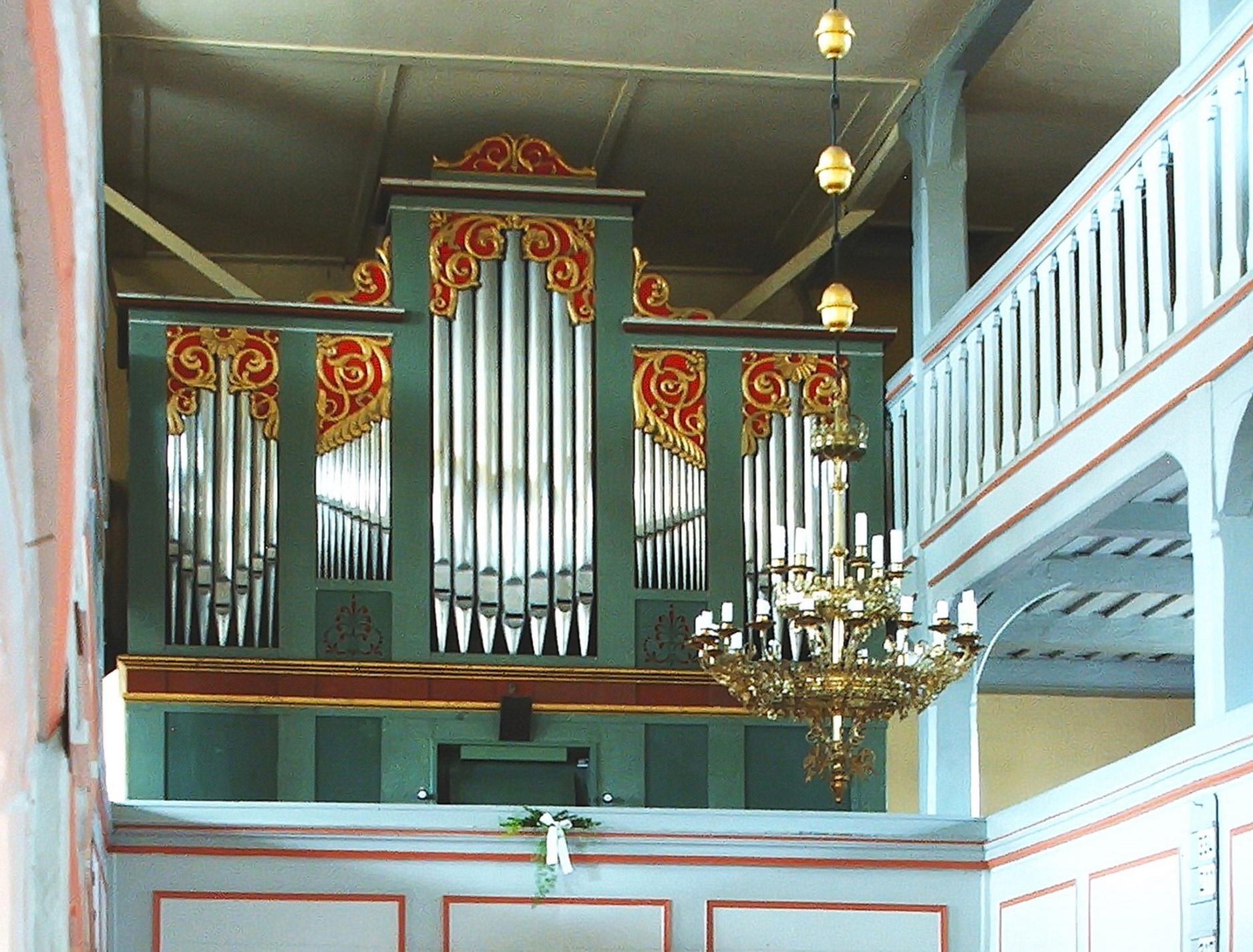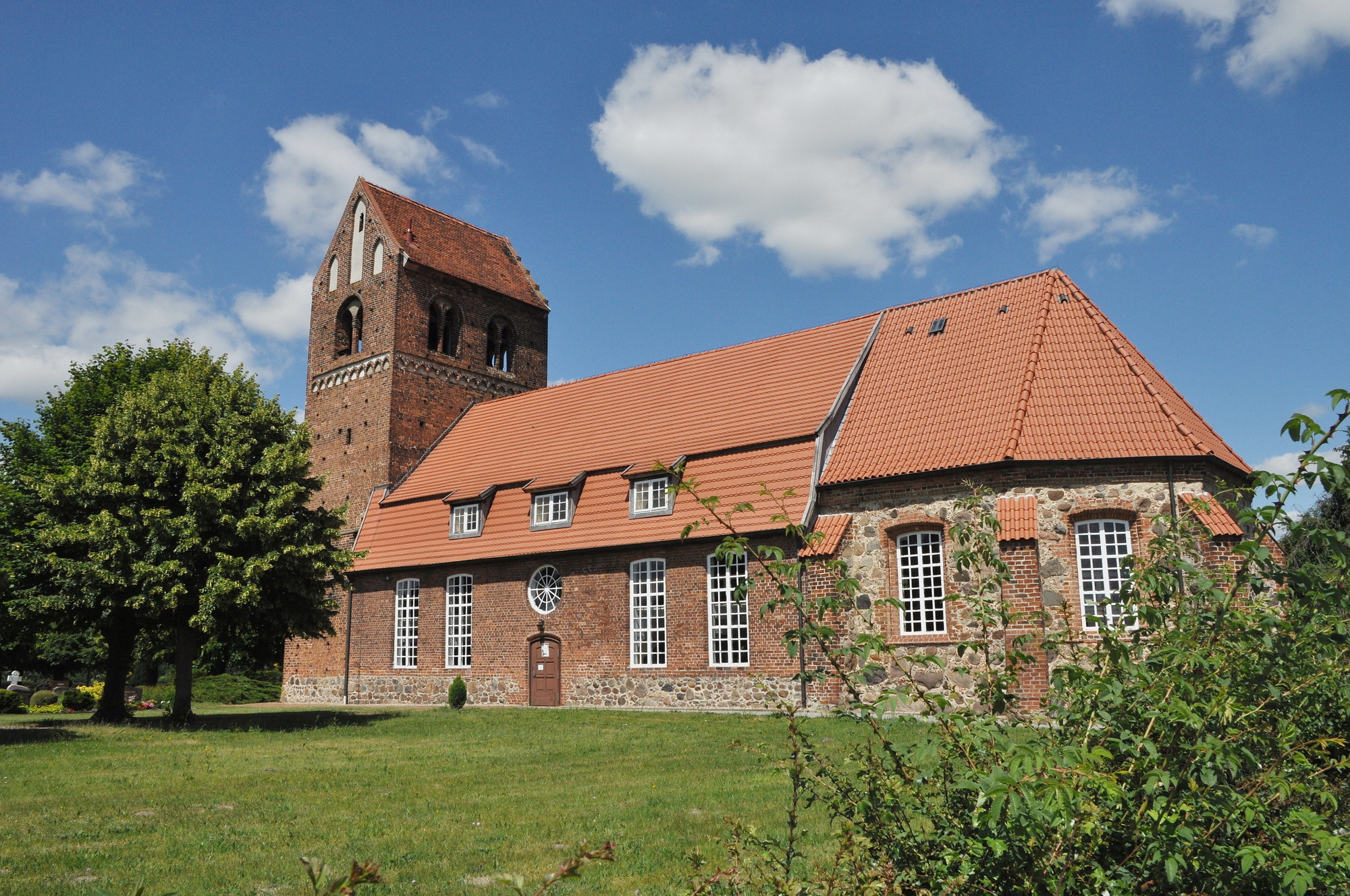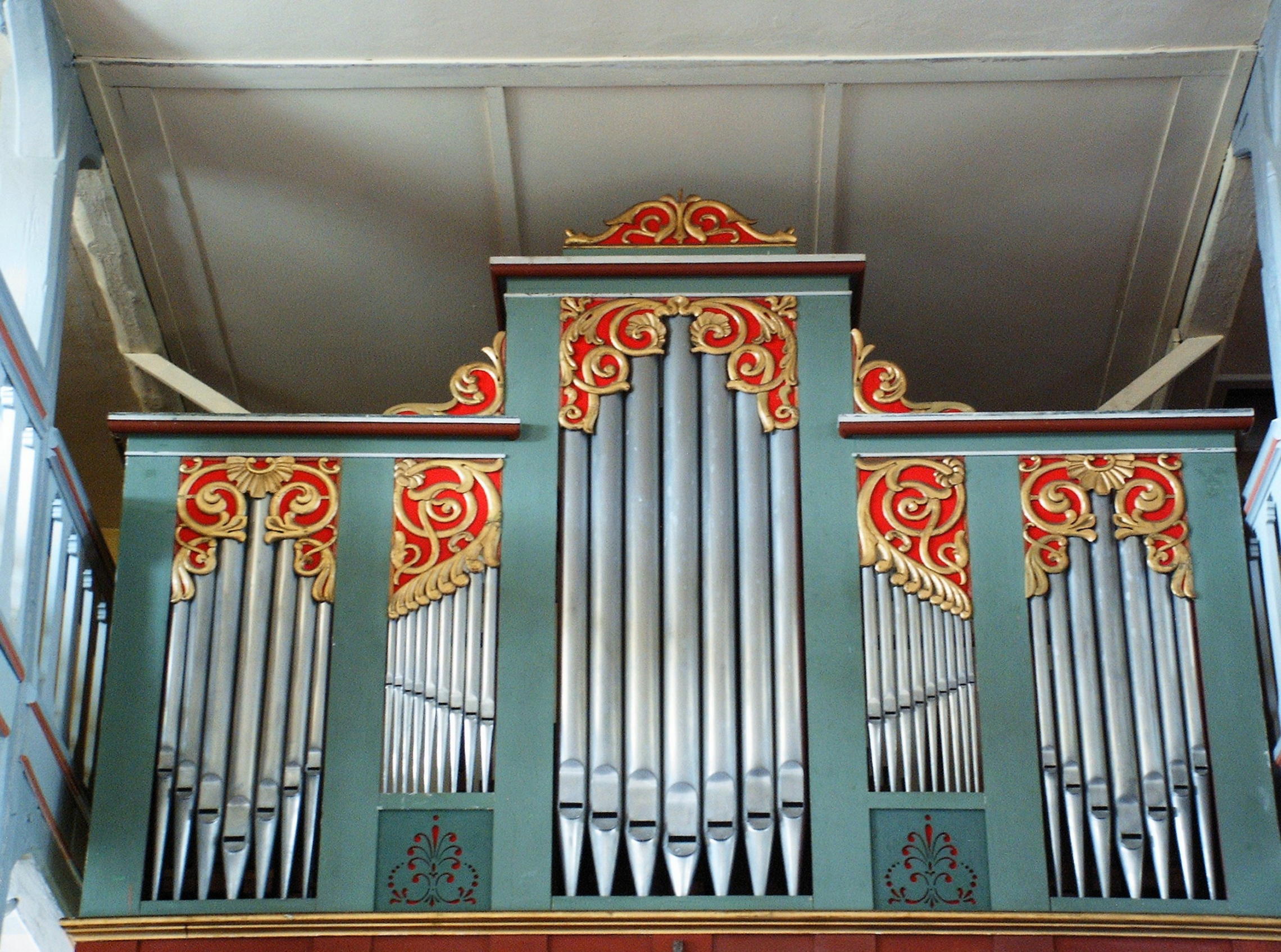Lemgow, Hohe Kirche
| Builder | E. Meyer |
|---|---|
| Year | 1856 |
| Period/Style | Romantic |
| Stops | 17 |
| Keyboards | 2+P |
| Keyaction | tracker/mechanical |
The organ in the Hohe Kirche in Lemgow, built by Eduard Meyer in 1856, is an exemplary work showcasing Meyer’s craftsmanship, with its ability to fill the lengthy church space with its rich and diverse foundational tones. The organ retains its original manual action, characterized by iron rods mounted in leather loops, which create noticeable friction. This requires the organist to apply more effort when playing, but the warm and resonant sound of the organ makes up for the exertion. The Pedal-Posaune, featuring wide zinc resonators, produces a sonorous bass tone, though its volume diminishes in the higher registers.
Over the years, the organ has undergone several modifications. In 1911/12, two 2’ stops were removed in favor of additional foundational stops, and during World War I, the original tin prospect pipes were requisitioned for the war effort, later replaced by zinc pipes. The organ was further modernized in 1930 with an electric blower installation. A significant restoration took place in 1986 by the Alfred Führer organ workshop, which included the reconstruction of the original prospect pipes and the restoration of the 2’ stops, following the model of another Meyer organ.
Over the years, the organ has undergone several modifications. In 1911/12, two 2’ stops were removed in favor of additional foundational stops, and during World War I, the original tin prospect pipes were requisitioned for the war effort, later replaced by zinc pipes. The organ was further modernized in 1930 with an electric blower installation. A significant restoration took place in 1986 by the Alfred Führer organ workshop, which included the reconstruction of the original prospect pipes and the restoration of the 2’ stops, following the model of another Meyer organ.
| Erstes Clavier | Zweites Clavier | Pedal |
|---|---|---|
| Bourdon 16' | Principal 8' | Subbaß 16' |
| Principal 8' | Gedact 8' | Principal 8' |
| Rohrflöte 8' | Gambe 8' | Violon 8' |
| Octave 4' | Rohrflöte 4' | Octave 4' |
| Spitzflöte 4' | Waldflöte 2' | Posaune 16' |
| Octave 2' | ||
| Mixtur 3f |
No Video/Audio samples available.
https://nomine.net/orgel/lemgow-bei-predoehl-hohe-kirche/
 Pipe Organ Map
Pipe Organ Map

